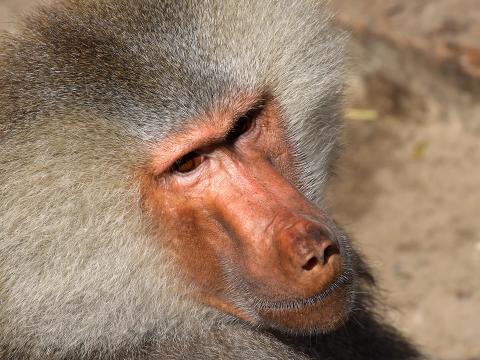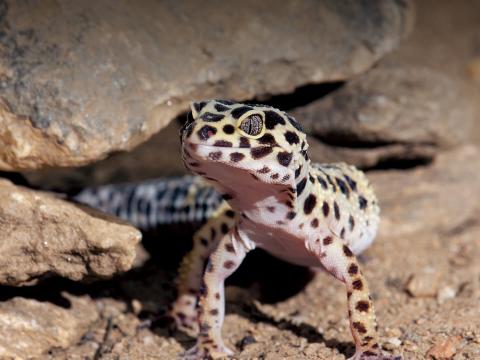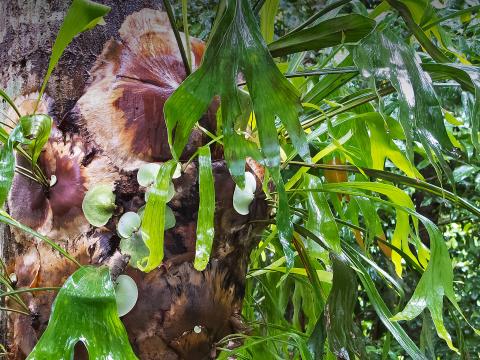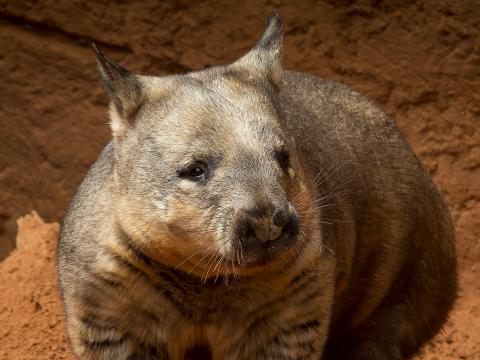Binturong
- Class: Mammalia (Mammals)
- Order: Carnivora
- Family: Viverridae
- Genus: Arctictis
- Species: binturong
ABOUT
It's a what? It’s a binturong! Looking like something Dr. Seuss might have dreamed up, a binturong has a face like a cat's and a body like a bear's, long, shaggy black hair, stiff white whiskers, and a prehensile tail that’s as long as its body. Binturongs are also called bearcats, but that name is rather misleading since they are not related to bears OR cats. Instead, they are related to civets and fossas but look more like gigantic dust mops and smell like a freshly made batch of popcorn!
The hair coloration on binturongs can vary from black to brown with white, silver, or rust on the tips, which gives the binturong a grizzled appearance. Binturongs are classed as carnivores but eat mostly fruit. Their long ear tufts and reddish-brown eyes give them an endearing appearance but one that isn’t seen very often by humans.
Binturongs spend most of their time in the trees, but they usually have to climb down to get from tree to tree, since they are not nearly as acrobatic as monkeys. Padded paws and long claws help them grasp branches. Their body is low to the ground, like a bear or a human. They walk flat-footed, and, when waddling on the ground, they tend to amble much like a bear does. Unlike a bear or human, though, binturongs can turn their ankles 180 degrees so their claws can still grip when climbing down a tree headfirst.
A binturong’s tail is very thick and muscular at the base, with the last third of it prehensile to be used like an extra hand when climbing around in the treetops. A leathery patch at the tip helps the tail grip the branches a binturong climbs through. Binturong youngsters have been seen hanging upside down while completely supported by their tail, but adults are a bit too heavy to do this without using a paw or two for an extra grip. The binturong is the only mammal from Africa, Asia, or Europe and one of only two carnivores with a prehensile tail (the other is the kinkajou).
Binturongs can swim fairly well and have good vision day or night, and so can be active at any hour they choose.
HABITAT AND DIET
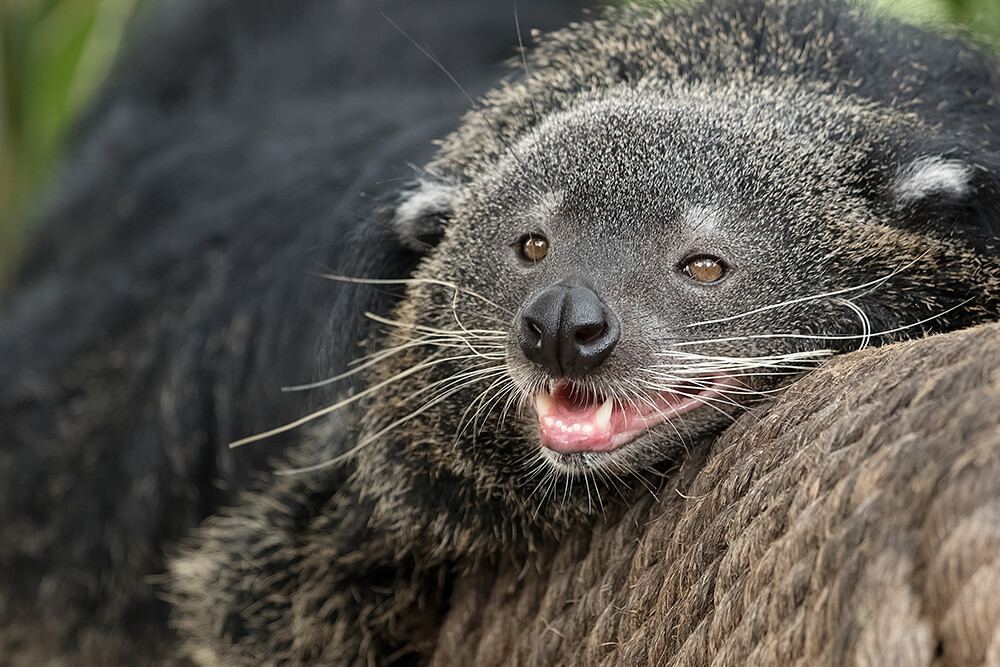
These bearcats generally sleep during the day high in the forest canopy and love to bask in the sun. Binturongs are primarily nocturnal and move slowly through their home in the trees to look for fruit. Because of this, they have often been confused with sloths. Like sloths, binturongs have long, shaggy coats that keep their skin dry. They groom their coats like cats do, licking and nibbling their fur, and cleaning their face with their front paws. Claws are kept sharp by scratching them on tree trunks. Other than humans, binturongs have no known predators.
Binturongs may smell like popcorn, but it’s not on their menu. They are classified as carnivores but eat most anything that suits their fancy: mainly fruits, but also vegetables, birds, small mammals, and fish. They have been known to eat carrion, small invertebrates, eggs, leaves, and plant shoots, too.
At the San Diego Zoo and the San Diego Zoo Safari Park, binturongs eat a wide variety of fruits and vegetables, a fortified, meat-based commercial carnivore diet, and low-starch, high-fiber primate biscuits.
Binturongs have an important job in the forests where they are found. Through their fecal deposits (poop), they help spread seeds from the fruits they eat, helping to replant the rainforest. They also help with pest control, since they catch and eat rodents.
FAMILY LIFE
The female binturong is one of only a few mammals that can experience delayed implantation, which allows the female to time the birth of her young with good environmental conditions. This means that mating can take place anytime of the year, because the female can control when her babies are born.
Females are about 20 percent larger and heavier than the males and are the dominant sex. A male sometimes stays with the female after mating, even after she has given birth. Baby binturongs are born with eyes sealed and remain hidden in the mother's thick fur for their first few days. At six to eight weeks, they are the size of a domestic cat, have grown a coat of coarse hair, and begin to explore and eat solid food. Binturongs usually live by themselves or in small family groups consisting of a female and her immature offspring.
Communication is key. Most wildlife has some sort of odor, and many kinds use scent for communicating with others of their kind. Some, like skunks, use scent to keep predators away. Binturongs have a very distinctive smell—that of buttered popcorn! As pleasing as it might be to a human nose, that scent serves a purpose: to let other binturongs know they are trespassing on someone else’s territory or to discourage would-be predators. This can be a good thing if you’re looking for a mate, or a not-so-good thing if you’re the trespasser. The scent is made by an oil gland under the tail; as a binturong drags its tail through the branches it climbs on, it leaves its scent behind.
Binturongs also make lots of noises to communicate: snorts and chuckles when happy, a high-pitched wail that sounds like a cat screaming if bothered. They also make loud howls, low grunts, and hisses. A binturong who participates in educational programs at the San Diego Zoo makes a funny snort when he’s found something interesting on one of his walks!
CONSERVATION
Binturongs are listed as vulnerable in some parts of their range and endangered in others. Nowhere are they common, though, and they are currently at risk due to habitat destruction, poaching for traditional Asian medicines, and the fur and pet trade. They are also considered to be a delicacy in some areas and are hunted for food.
The Association of Zoos and Aquariums has established a Species Survival Program for binturongs, of which San Diego Zoo Wildlife Alliance is a part.
By supporting San Diego Zoo Wildlife Alliance, you are our ally in saving and protecting wildlife worldwide.




